Hello bird enthusiasts! If you love watching birds, you might have noticed some striking red-headed ones in your area.
These birds are not only beautiful but also interesting to observe.
In this article, I’ll introduce you to 25 birds with red heads, along with their pictures, so you can easily identify them in the wild.
From the impressive Northern Cardinal to the unique Pileated Woodpecker, these birds are sure to catch your eye.
So, get ready to learn more about these stunning birds with fiery red heads!
| Image | Bird Name | Scientific Name | Price |
|---|---|---|---|
 |
| 9.7 | Check Price |
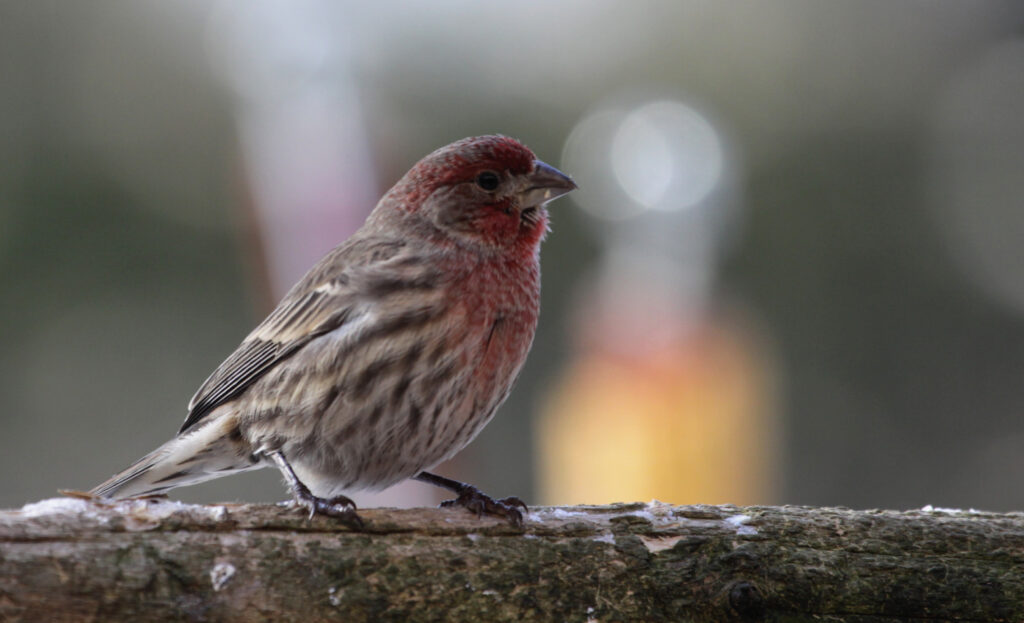 |
| 9.5 | Check Price |
 |
| 9.1 | Check Price |
 |
| 8.8 | Check Price |
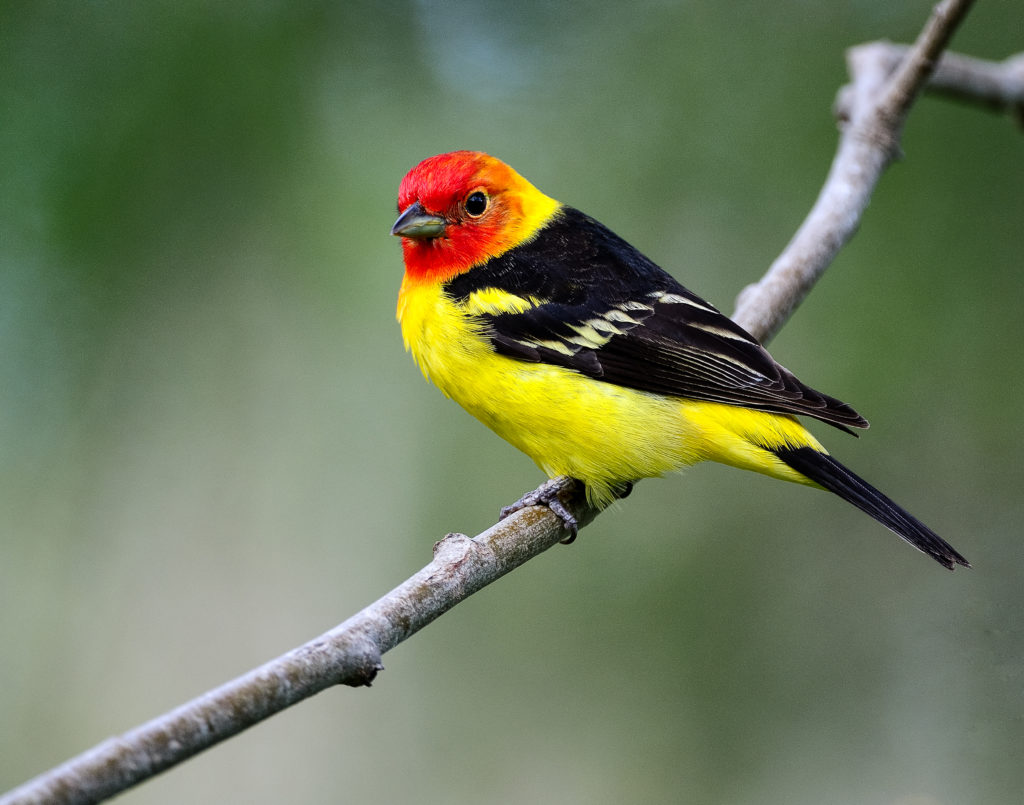 |
| 8.6 | Check Price |
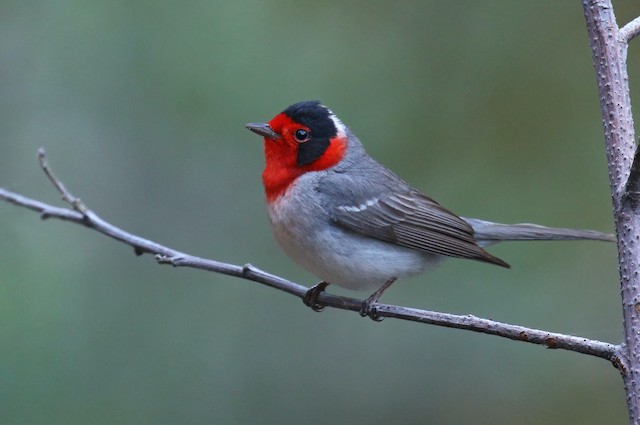 |
| 8.2 | Check Price |
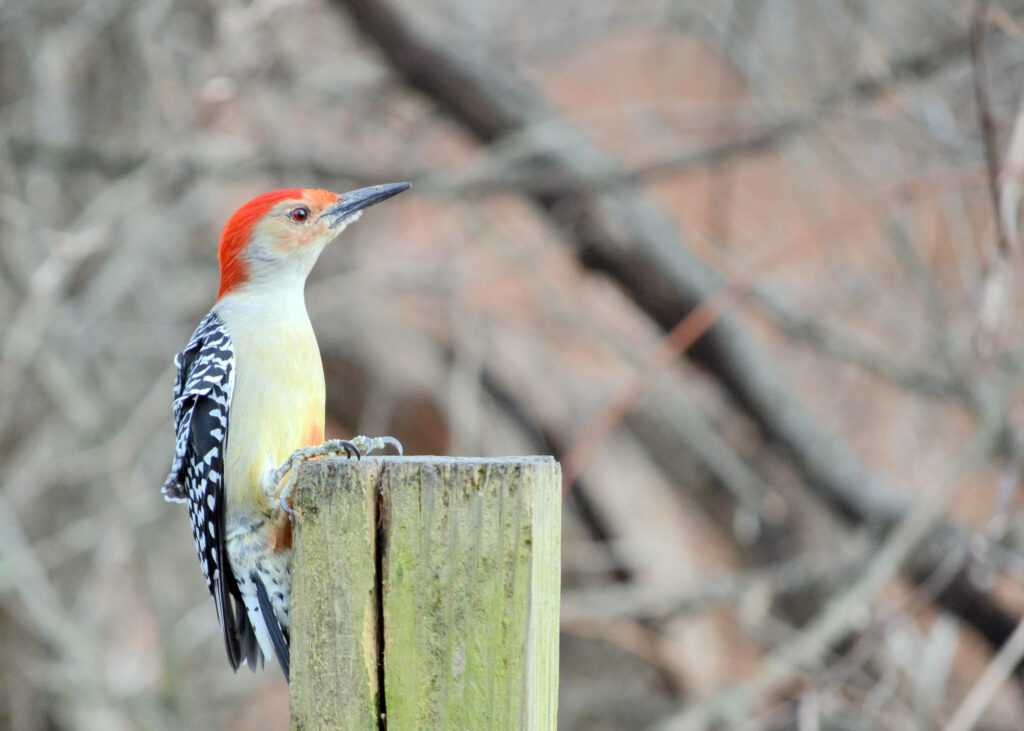 |
| 8 | Check Price |
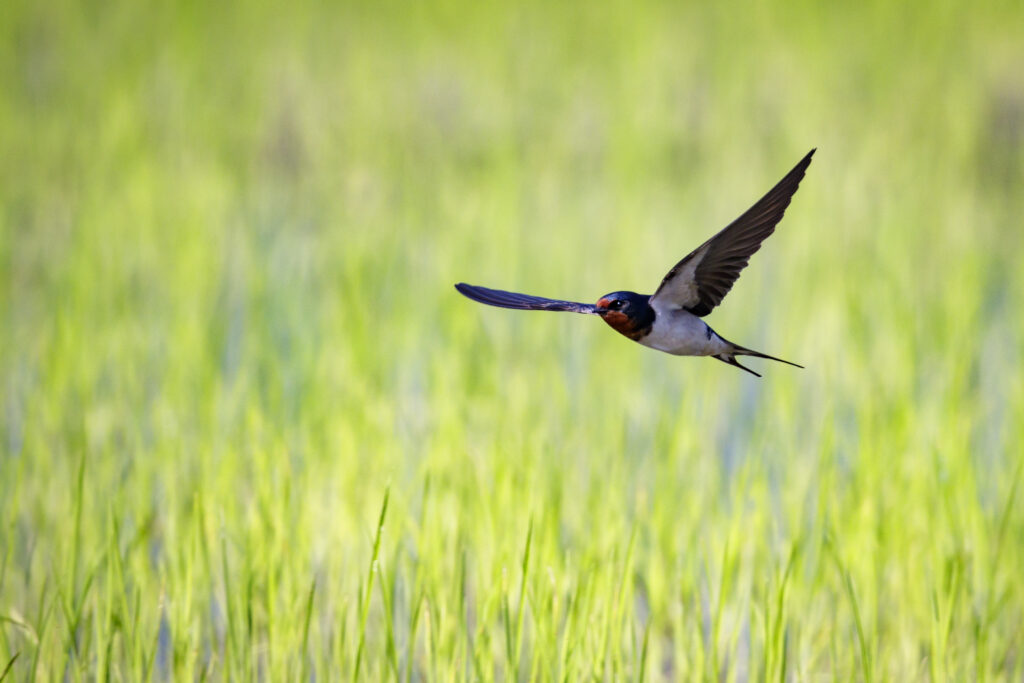 |
| 7.7 | Check Price |
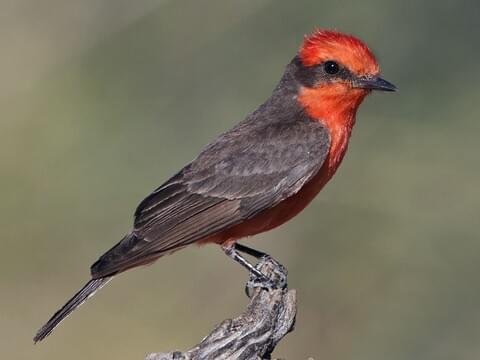 |
| 7.4 | Check Price |
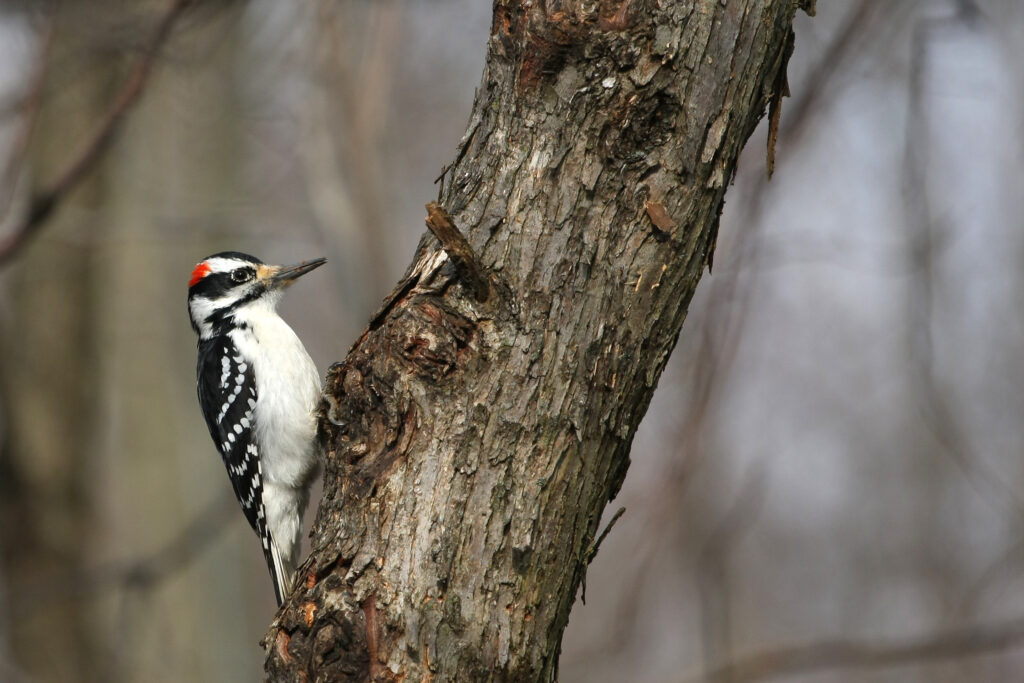 |
| 7.2 | Check Price |
 |
| 9.5 | Check Price |
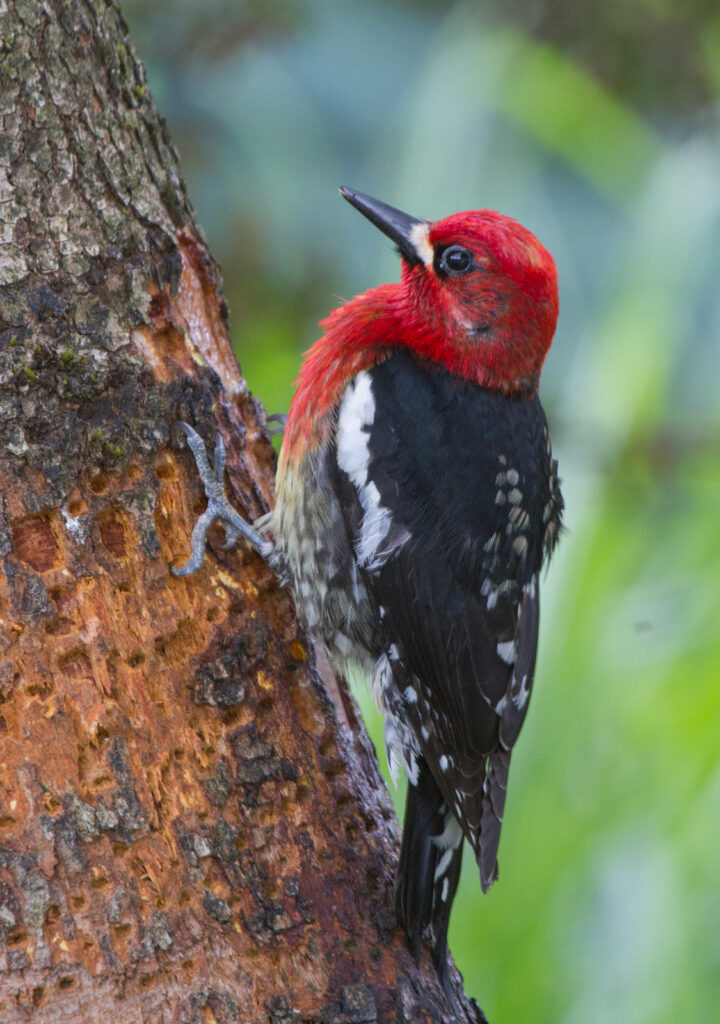 |
| 9.5 | Check Price |
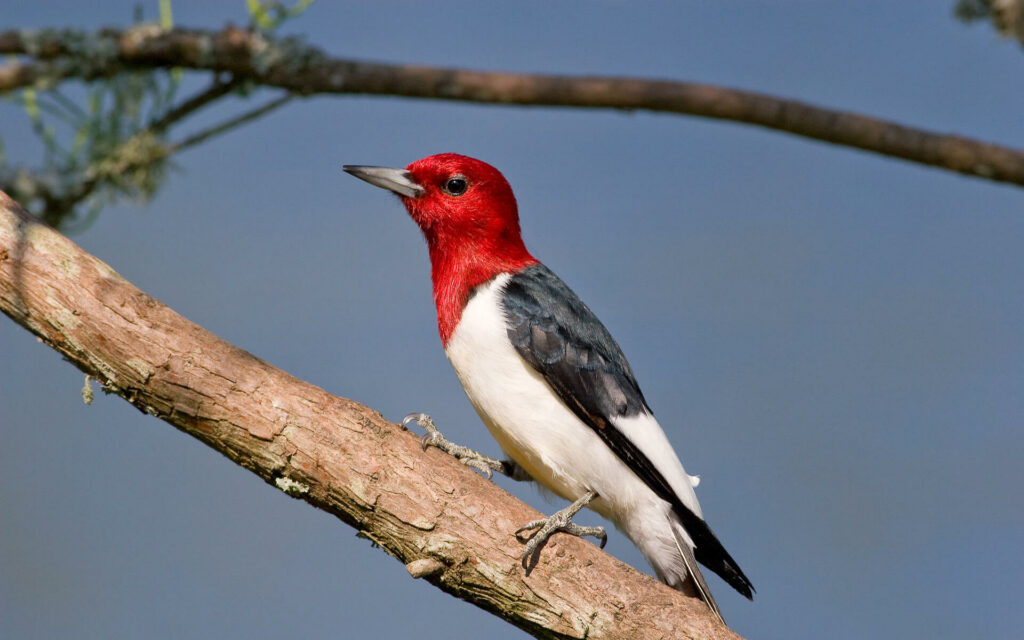 |
| 9.5 | Check Price |
 |
| 9.5 | Check Price |
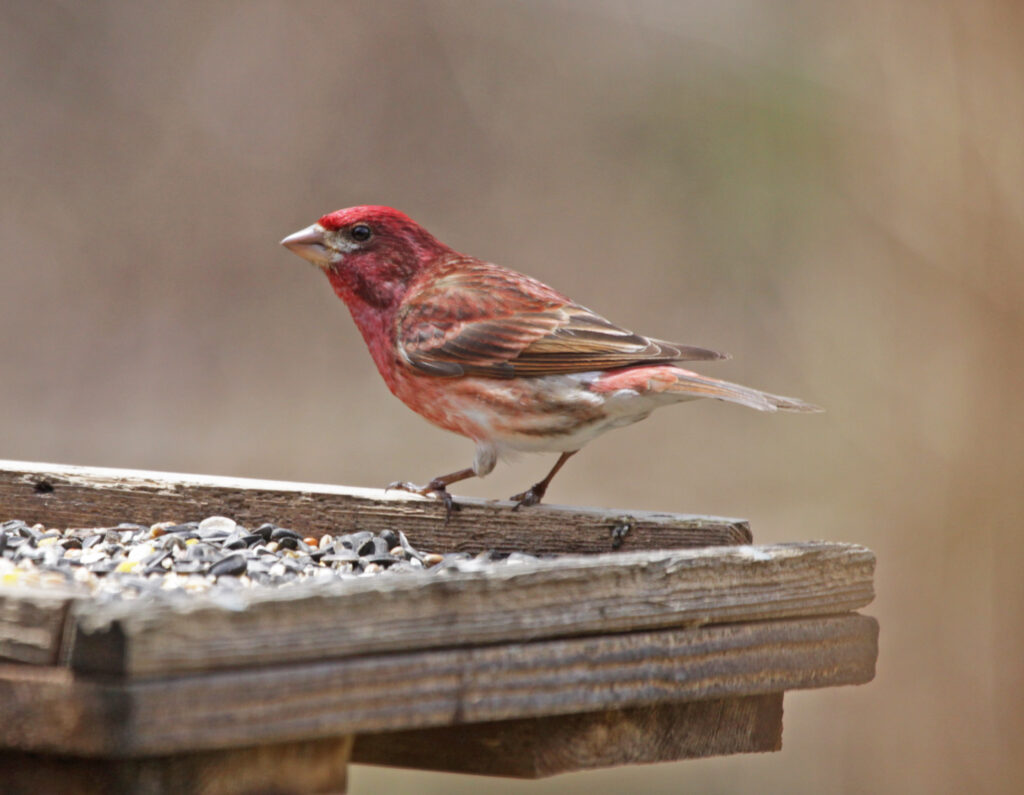 |
| 9.5 | Check Price |
 |
| 9.5 | Check Price |
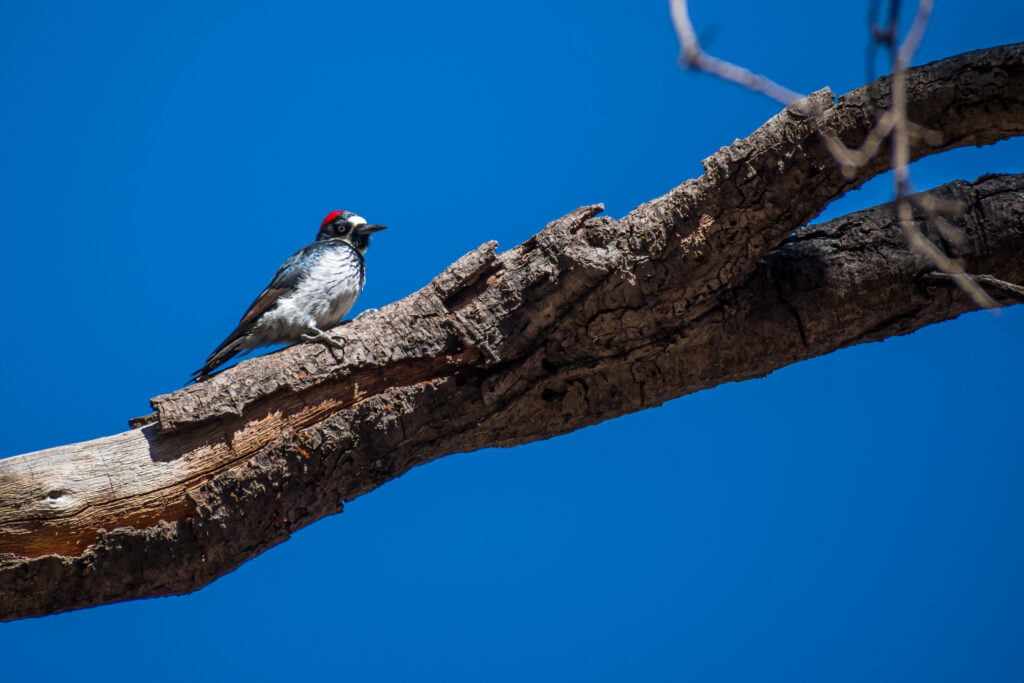 |
| 9.5 | Check Price |
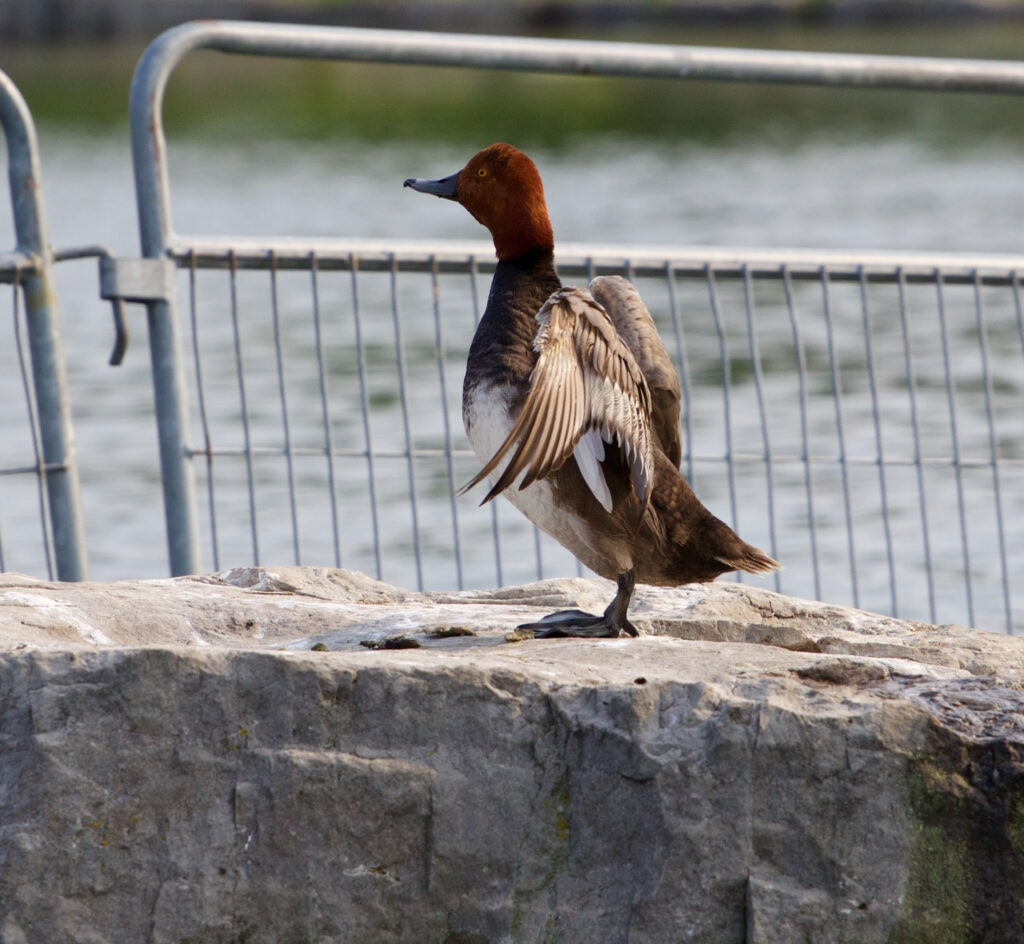 |
| 9.5 | Check Price |
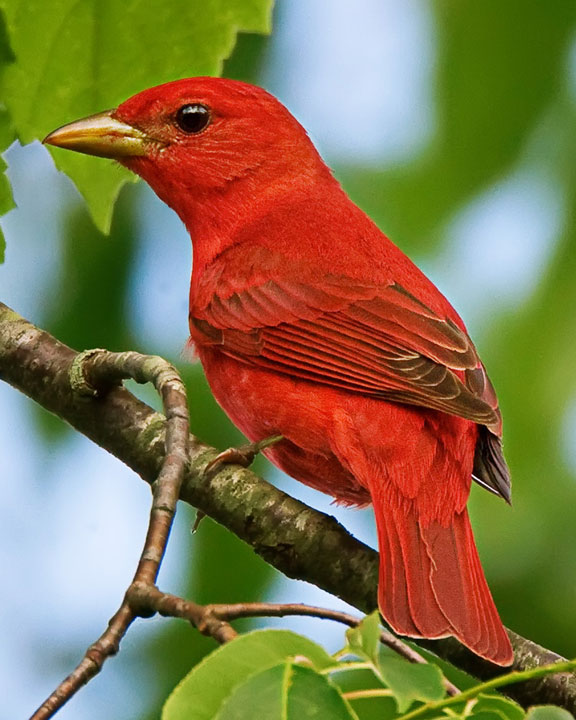 |
| 9.5 | Check Price |
 |
| 9.5 | Check Price |
 |
| 9.5 | Check Price |
 |
| 9.5 | Check Price |
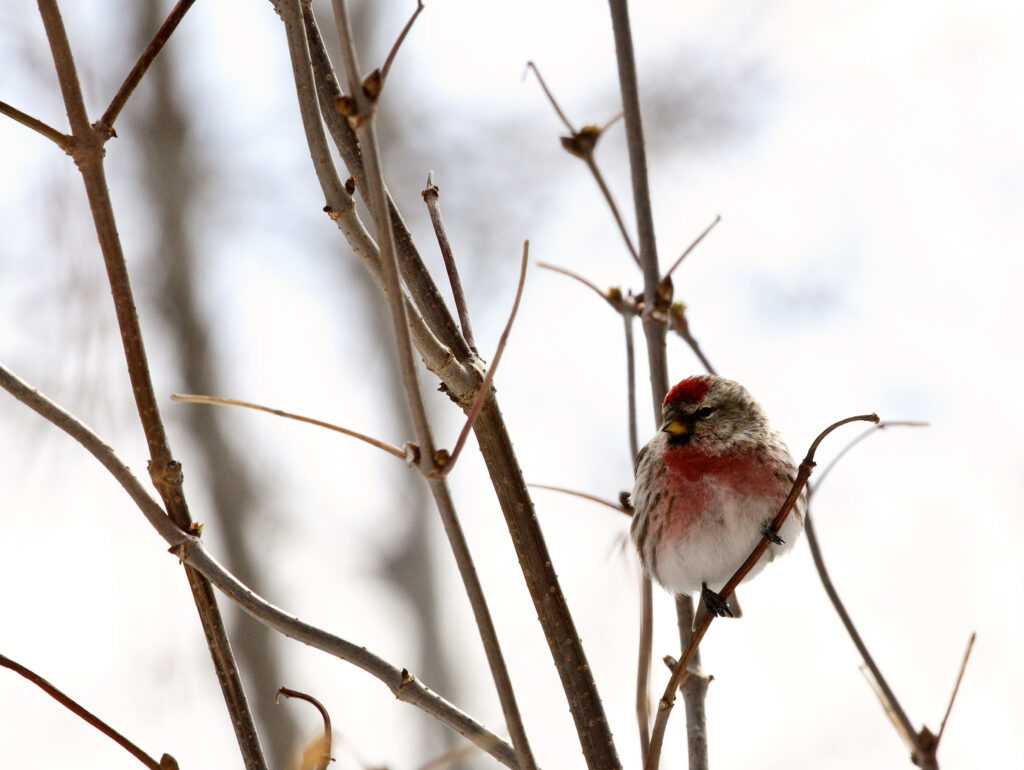 |
| 9.5 | Check Price |
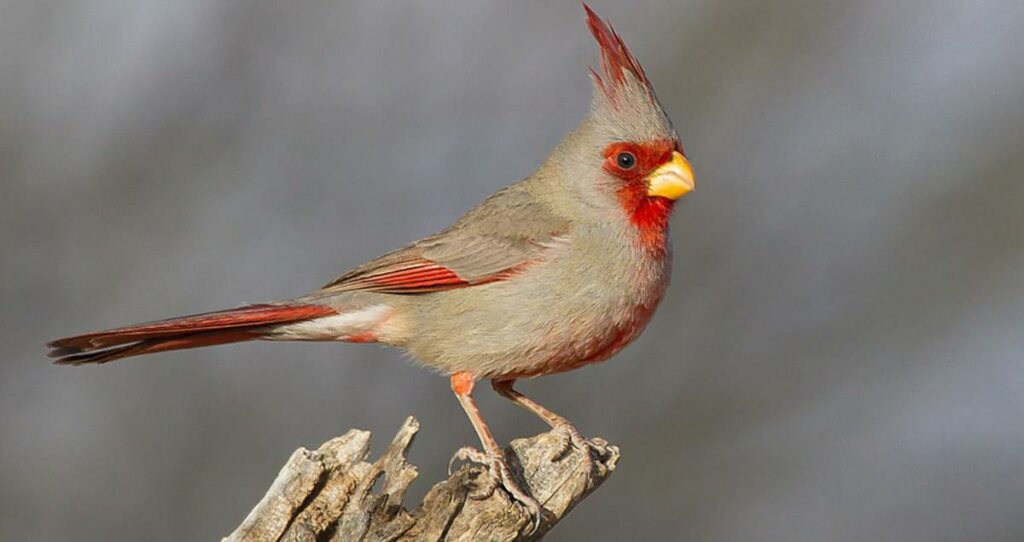 |
| 9.5 | Check Price |
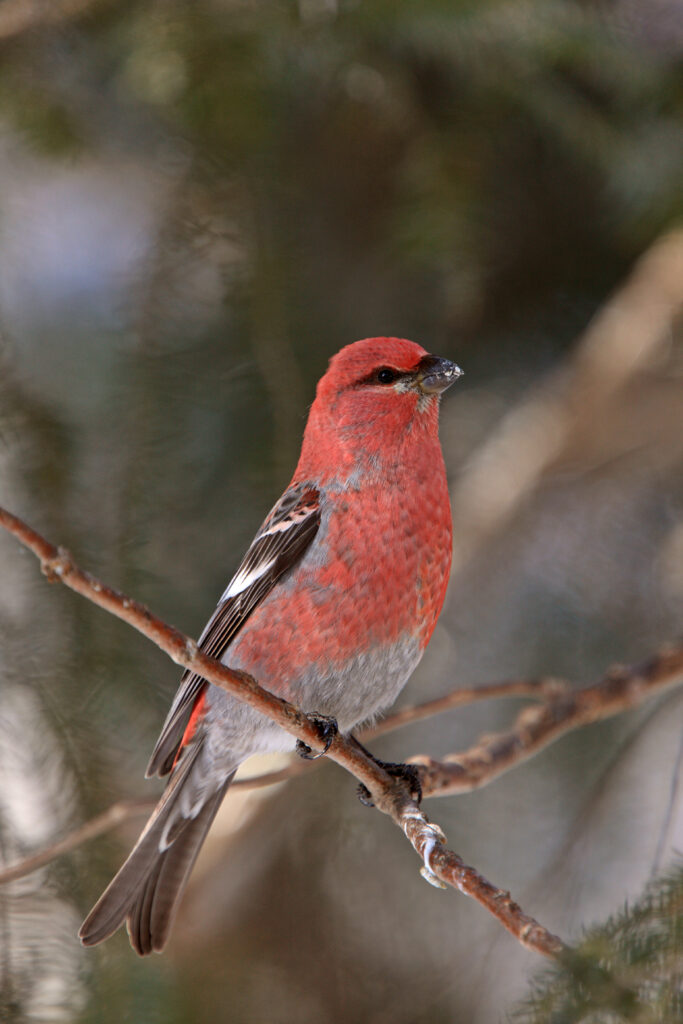 |
| 9.5 | Check Price |
If you don’t have time to read this whole article, then check out our YouTube video for a condensed version of the information.
Types of Birds with Red Heads
1. Cassin’s Finch

In appearance, Cassin’s Finch (Haemorhous cassinii) is a little brown bird with a red head that looks quite similar to the House Finch.
The male Cassin’s Finch is the only one with a red head. He has a crimson face, breast, and back, as well as unmarked whitish underparts, which distinguishes him from the House Finch.
These birds may be found in the Western states of Idaho, Utah, and Colorado, where they live in the mountains.
It is possible to find them from Canada to Mexico.
Cassin’s Finch is a member of the Fringillidae family.
Cassin’s Finch is named after the American ornithologist John Cassin, who described the species in 1856.
It feeds on seeds, berries, and insects, and is known for its high-pitched, warbling song.
Cassin’s Finch measures about 15 – 16 cm in length and weighs about 18 – 20 g. Its wingspan is about 25 – 29 cm.
The bird builds a cup-shaped nest made of twigs, grass, and plant fibers. It lays 4 – 5 eggs, which are incubated by the female for about 13 – 15 days.
Cassin’s Finch is a common and widespread species and is not considered threatened.
Below are the characteristics of Cassin’s Finch,
| Scientific Name | Haemorhous cassinii |
| Length | 6.3 in (16 cm) |
| Weight | 0.8 – 1.2 oz (24 – 34 g) |
| Wingspan | 9.8 – 10.6 in (25 – 27 cm) |
| Habitat | Forests |
| Food | Seeds |
| Nesting | Tree |
| Behavior | Ground Forager |
2. House Finch

It’s a common and ubiquitous species, the House Finch (Haemorhous mexicanus), which has a red head and a small body.
Most of the United States is home to these birds, including major cities.
Despite its red head and brown body, the House Finch has streaked; brownish underparts that make it stand out from the crowd.
Only male House Finch has red heads, and their colors become significantly stronger during the mating season.
House finches are a delight to observe in the yard because they use finch feeders.
The House Finch measures about 12 – 15 cm in length and weighs about 15 – 20 g. Its wingspan is about 20 – 25 cm.
The bird is found in a variety of habitats, including gardens, parks, and urban areas.
It is a common and widespread species and is not considered threatened.
The House Finch feeds on seeds, berries, and insects. In the winter, it often forms large flocks to forage for food.
The bird builds a cup-shaped nest made of twigs, grass, and plant fibers.
It lays 3 – 5 eggs, which are incubated by the female for about 12 – 14 days. Both parents help raise the chicks, which fledge after about 12 – 15 days.
The male has a red head, breast, and rump, while the female is brownish with streaked underparts.
Below are the characteristics of the House Finch,
| Scientific Name | Haemorhous mexicanus |
| Length | 5.1 – 5.5 in (13 – 14 cm) |
| Weight | 0.6 – 0.9 oz (16 – 27 g) |
| Wingspan | 7.9 – 9.8 in (20 – 25 cm) |
| Habitat | Towns |
| Food | Seeds |
| Nesting | Tree |
| Behavior | Ground Forager |
3. Northern Cardinal

The Northern Cardinal (Cardinalis cardinalis) is a brightly colored bird, with a red head, breast, and wing patches.
The male is a deep red color, while the female is a duller red with a grayish-brown crest.
The bird is known for its loud, cheerful song, which it sings throughout the year.
It is also an agile flier, and can often be seen darting through the forest canopy.
With brown coloration, a strong brown crest, red accents, and red beaks, the females are likewise a bit conspicuous.
It is a member of the Cardinalidae family, which also includes other cardinals and grosbeaks.
The Northern Cardinal measures about 21 – 23 cm in length and weighs about 41 – 49 g. Its wingspan is about 28 – 31 cm.
Northern Cardinals may be found in the eastern and southern United States, and during the breeding season, they can occasionally fight their own reflection to protect their territory.
You may attract more Northern Cardinals to your garden by using sunflower seeds, peanut nuts, millet, and milo.
The Northern Cardinal feeds on seeds, berries, fruits, and insects. It forages for food on the ground or in low bushes and trees.
The bird builds a cup-shaped nest made of twigs, grass, and plant fibers.
It lays 3 – 4 eggs, which are incubated by the female for about 12 – 13 days. Both parents help raise the chicks, which fledge after about 9 – 11 days.
It is a common and widespread species and is not considered threatened.
Below are the characteristics of the Northern Cardinal,
| Scientific Name | Cardinalis cardinalis |
| Length | 8.3 – 9.1 in (21 – 23 cm) |
| Weight | 1.5 – 1.7 oz (42 – 48 g) |
| Wingspan | 9.8 – 12.2 in (25 – 31 cm) |
| Habitat | Open Woodlands |
| Food | Seeds |
| Nesting | Shrub |
| Behavior | Ground Forager |
4. Downy Woodpecker

Downy Woodpeckers (Dryobates pubescens) is a small woodpecker that is native to North America. It is a member of the Picidae family.
They’re found in almost every state. The males of this bird have a red head patch on the rear of their heads.
Male and female woodpeckers have distinct appearances.
Males frequently have a crimson patch on their chests. They’re frequently mistaken for other birds like chickadees and nuthatches.
They are black and white in appearance. They have a similar appearance to the Hairy Woodpecker.
In addition to suet feeders, they will also consume black oil sunflower seeds, millet, and peanuts from platforms and feeds on insects, spiders, and other invertebrates.
The Downy Woodpecker measures about 14 – 18 cm in length and weighs about 20 – 30 g. Its wingspan is about 24 – 30 cm.
The bird builds a nest hole in a dead tree or branch. It lays 4 – 7 eggs, which are incubated by the female for about 11 – 14 days.
The bird is found in a variety of habitats, including forests, woodlands, orchards, and gardens.
It is also an agile flier, and can often be seen hovering near tree trunks and branches.
Below are the characteristics of the Downy Woodpecker,
| Scientific Name | Dryobates pubescens |
| Length | 5.5 – 6.7 in (14 – 17 cm) |
| Weight | 0.7 – 1.0 oz (21 – 28 g) |
| Wingspan | 9.8 – 11.8 in (25 – 30 cm) |
| Habitat | Forests |
| Food | Insects |
| Nesting | Cavity |
| Behavior | Bark Forager |
5. Western Tanager
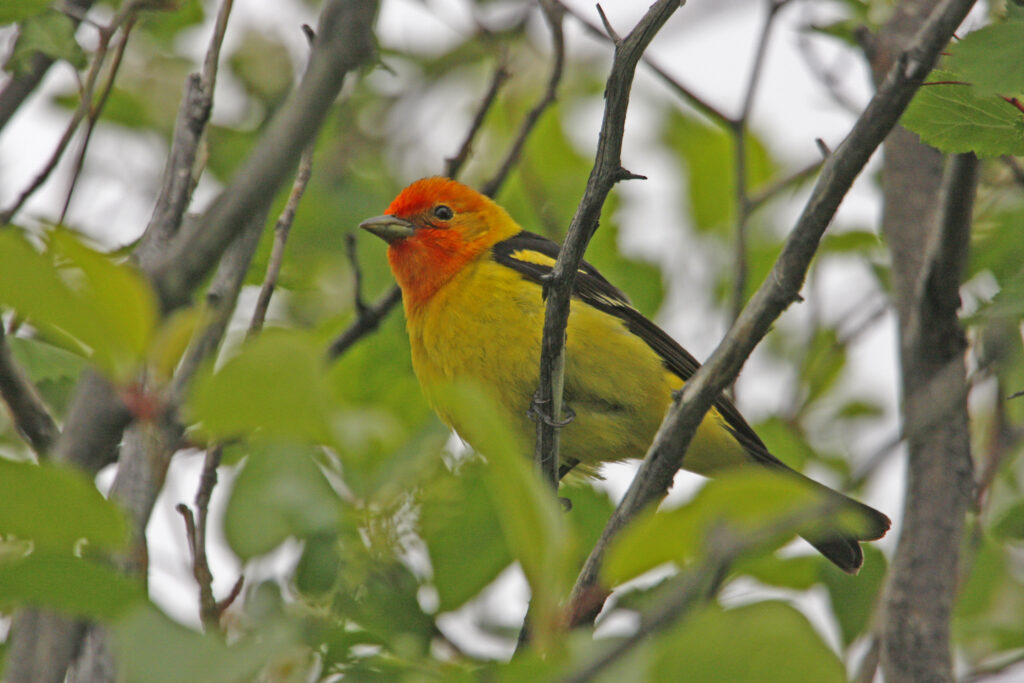
The Western Tanager (Piranga ludoviciana) is a brightly colored bird that may be found across the Western United States, as well as in Mexico and Canada.
It is a member of the Cardinalidae family, which also includes other cardinals and grosbeaks.
The Western Tanager is a brightly colored bird, with a yellow body, black wings, and a red head and breast. The male is more brightly colored than the female and has a yellow face and throat.
This is one of America’s most gorgeous birds, and it’s difficult to confuse it with anything else.
During the mating season, the Western Tanager’s crimson head is most visible.
The Western Tanager measures about 16-20 cm in length and weighs about 25 – 37 g. Its wingspan is about 25 – 31 cm.
The bird is found in a variety of habitats, including forests, woodlands, and gardens. In the summer, it can be found in high elevations, while in the winter it descends to lower elevations.
The Western Tanager feeds on insects, berries, and seeds.
The bird builds a cup-shaped nest made of twigs, grass, and plant fibers. It lays 3 – 5 eggs, which are incubated by the female for about 12 – 14 days.
Below are the characteristics of the Western Tanager,
| Scientific Name | Piranga ludoviciana |
| Length | 6.3 – 7.5 in (16 – 19 cm) |
| Weight | 0.8 – 1.3 oz (24 – 36 g) |
| Wingspan | 11.5 in (29 cm) |
| Habitat | Forests |
| Food | Insects |
| Nesting | Tree |
| Behavior | Foliage Gleaner |
6. Red-faced Warbler

The Red-Faced Warbler (Cardellina rubrifrons) with a red head is a beautiful bird.
It is a member of the Parulidae family, which also includes other New World warblers.
These birds have a black “helmet” on their heads.
The Red-faced Warbler is a brightly colored bird, with a yellow body, black wings, and a red face and breasts.
The male is more brightly colored than the female and has a yellow face and throat.
Only the states of Arizona and New Mexico are likely to encounter these birds, which are not widely distributed in the United States.
They’re a high-altitude woodland bird that only appears during the summer, so you’ll have to travel to view one.
The bird is found in a variety of habitats, including coniferous and deciduous forests, alpine meadows, and shrubby areas.
The Red-faced Warbler measures about 11 – 13 cm in length and weighs about 8 – 11 g. Its wingspan is about 16 – 19 cm.
The Red-faced Warbler feeds on insects, spiders, and other invertebrates.
The bird builds a cup-shaped nest made of twigs, grass, and plant fibers.
It lays 3 – 5 eggs, which are incubated by the female for about 12 – 14 days.
Below are the characteristics of the Red-Faced Warbler,
| Scientific Name | Cardellina rubrifrons |
| Length | 5.5 in (14 cm) |
| Weight | 0.3 – 0.4 oz (8 – 11 g) |
| Wingspan | 8.3 in (21 cm) |
| Habitat | Forests |
| Food | Insects |
| Nesting | Ground |
| Behavior | Foliage Gleaner |
7. Red-bellied Woodpecker

Red-bellied Woodpecker (Melanerpes carolinus) is a medium-sized woodpecker that is native to North America.
It is a member of the Picidae family, which also includes other woodpeckers, sapsuckers, and flickers.
The Red-bellied Woodpecker is a colorful bird, with a black and white striped back, white belly, and a red cap on the back of its head.
The male has a red nape and breast, while the female has a smaller red patch on the nape.
They’re found throughout the Eastern United States.
In the spring and summer, they emit a loud cry and may be found in woodlands and forests, especially near deadwood.
They are migratory woodpeckers. The bird is found in a variety of habitats, including forests, woodlands, orchards, and gardens.
Suet feeders attract more Red-bellied Woodpeckers, and they will occasionally eat on hummingbird feeders. They also feed on insects, spiders, and other invertebrates
The Red-bellied Woodpecker measures about 25 – 30 cm in length and weighs about 60 – 100 g. Its wingspan is about 38 – 46 cm.
The bird builds a nest hole in a dead tree or branch. It lays 4 – 6 eggs, which are incubated by the female for about 11 – 14 days.
Below are the characteristics of the Red-bellied Woodpecker,
| Scientific Name | Melanerpes carolinus |
| Length | 9.4 in (24 cm) |
| Weight | 2.0 – 3.2 oz (56 – 91 g) |
| Wingspan | 13.0 – 16.5 in (33 – 42 cm) |
| Habitat | Forests |
| Food | Insects |
| Nesting | Cavity |
| Behavior | Bark Forager |
8. Barn Swallow

In addition to their blue backs, wings, and tails, barn swallow species also have rusty red cheeks.
Prior to flying south for the winter, they breed over much of North America.
To find food, they are commonly observed darting over fields and open water.
They also make nests out of mud that they create in man-made structures such as barns.
If you want to attract more Barn Swallows to your yard, you can put ground-up eggshells on a platform feeder and leave an outbuilding or barn door open.
Below are the characteristics of the Barn Swallow,
| Scientific Name | Hirundo rustica |
| Length | 5.9 – 7.5 in (15 – 19 cm) |
| Weight | 0.6 – 0.7 oz (17 – 20 g) |
| Wingspan | 11.4 – 12.6 in (29 – 32 cm) |
| Habitat | Grasslands |
| Food | Insects |
| Nesting | Building |
| Behavior | Aerial Forager |
9. Vermillion Flycatcher

The male Vermillion Flycatcher has a stunning crimson head and a matching red underbelly.
The female, on the other hand, seems a whole other species, since she is simple and brown in appearance.
The male’s head feathers create a crest that may be raised or lowered.
Texas, New Mexico, Arizona, Nevada, and California are home to just a few desert bird species that may be found in the desert.
Below are the characteristics of the Vermillion Flycatcher,
| Scientific Name | Pyrocephalus rubinus |
| Length | 13 – 14 cm (5.1 – 5.5 in) |
| Weight | 11 and 14 g (0.39 and 0.49 oz) |
| Wingspan | 24 to 25 cm (9.4 to 9.8 in) |
| Habitat | Grasslands |
| Food | Insects |
| Nesting | Tree |
| Behavior | Flycatching |
10. Hairy Woodpecker

Most of North America is home to the Hairy Woodpecker. The heads of these black and white birds feature a red mark.
They are somewhat bigger than their Downy Woodpecker counterpart.
They’re located in big trees and maybe heard tapping if you pay attention.
There is a lot to learn about woodpeckers.
Suet feeders might help you attract more Hairy Woodpeckers, especially in the winter.
Below are the characteristics of the Hairy Woodpecker,
| Scientific Name | Dryobates villosus |
| Length | 7.1 – 10.2 in (18 – 26 cm) |
| Weight | 1.4 – 3.4 oz (40 – 95 g) |
| Wingspan | 13.0 – 16.1 in (33 – 41 cm) |
| Habitat | Forests |
| Food | Insects |
| Nesting | Cavity |
| Behavior | Bark Forager |
11. Pileated Woodpecker

Pileated Woodpeckers have a brilliant red crest on their heads and a mainly black body with white streaks. Besides the northwest coast, it may be found in the eastern states.
Foraging for carpenter ants on decaying wood, it is a large bird approximately the size of a raven.
Suet feeders might help you attract more Pileated Woodpeckers.
Below are the characteristics of the Pileated Woodpecker,
| Scientific Name | Dryocopus pileatus |
| Length | 15.8 – 19.3 in (40 – 49 cm) |
| Weight | 8.8 – 12.3 oz (250 – 350 g) |
| Wingspan | 26.0 – 29.5 in (66 – 75 cm) |
| Habitat | Forests |
| Food | Insects |
| Nesting | Cavity |
| Behavior | Bark Forager |
12. Red-breasted Sapsucker

A little bird with a red head and chest, the Red-breasted Sapsucker is a small bird with a red head and chest.
Additionally, they have a unique white patch between the base of the beak and eye, as well as red feathers surrounding their heads.
You may find these woodpeckers across western North America, from Canada to Mexico.
Although they may be found in a broad range of forested environments, these birds prefer coniferous woods.
Below are the characteristics of the Red-breasted Sapsucker,
| Scientific Name | Sphyrapicus ruber |
| Length | 7.9 – 8.7 in (20 – 22 cm) |
| Weight | 1.9 – 2.2 oz (53.1 – 63.5 g) |
| Wingspan | 14.6 – 16.0 in (37 – 40.6 cm) |
| Habitat | Forests |
| Food | Insects |
| Nesting | Cavity |
| Behavior | Bark Forager |
13. Red-Headed Woodpecker

Red-headed as their name suggests, woodpeckers have red heads. Their bodies are white, and their wings are black and white.
They may be found in eastern states all year and breed, but they move to the extreme northwest of their territory to spend the winter.
They live in marshes and pine savannas, where they may be found in open woodlots and dead timber.
Insects and seeds are stored in cracks in wood, under bark, and under shingles on roofs.
They are aggressive protectors of their territory, even puncturing or removing the eggs of other species’ nests.
Suet feeders and fruit might entice Red-headed Woodpeckers to your yard.
Below are the characteristics of the Red-Headed Woodpecker,
| Scientific Name | Melanerpes erythrocephalus |
| Length | 7.5 – 9.1 in (19 – 23 cm) |
| Weight | 2.0 – 3.2 oz (56 – 91 g) |
| Wingspan | 16.5 in (42 cm) |
| Habitat | Open Woodlands |
| Food | Omnivore |
| Nesting | Cavity |
| Behavior | Flycatching |
14. Yellow-bellied Sapsucker

Yellow-bellied Raptors have black and white plumage, with a pale yellow underbelly and a red patch on top of their heads and throat.
They breed in the extreme north and in Canada, and they spend the winter in the southeast.
They may be found in woods, where they leave a trail of small holes in tree bark where their brush-tipped tongue has been consuming sap.
Suet feeders are a possibility.
Below are the characteristics of the Yellow-bellied Sapsucker,
| Scientific Name | Sphyrapicus varius |
| Length | 7.1 – 8.7 in (18 – 22 cm) |
| Weight | 1.5 – 1.9 oz (43 – 55 g) |
| Wingspan | 13.4 – 15.8 in (34 – 40 cm) |
| Habitat | Forests |
| Food | Insects |
| Nesting | Cavity |
| Behavior | Bark Forager |
15. Purple Finch

Its head and breast are a reddish-purple, but its back and wings are a darker shade of brown, like the House Finch.
You may view them all year round along the Pacific coast’s north and east coasts.
They flock to feeders in search of black oil sunflower seeds.
Below are the characteristics of the Purple Finch,
| Scientific Name | Haemorhous purpureus |
| Length | 4.7 – 6.3 in (12 – 16 cm) |
| Weight | 0.6 – 1.1 oz (18 – 32 g) |
| Wingspan | 8.7 – 10.2 in (22 – 26 cm) |
| Habitat | Forests |
| Food | Seeds |
| Nesting | Tree |
| Behavior | Foliage Gleaner |
16. Scarlet Tanagers

Red-headed and black-tailed Scarlet Tanagers are vividly colorful birds.
In the summer, they nest in eastern woodlands before traveling to South America.
Because they like to stay high in the forest canopy, Scarlet Tanagers might be difficult to see.
The Scarlet Tanager loves berry plants such as blackberries, raspberries, huckleberry, and Juneberries to attract them.
Below are the characteristics of the Scarlet Tanagers,
| Scientific Name | Piranga olivacea |
| Length | 6.3 – 6.7 in (16 – 17 cm) |
| Weight | 0.8 – 1.3 oz (23 – 38 g) |
| Wingspan | 9.8 – 11.4 in (25 – 29 cm) |
| Habitat | Forests |
| Food | Insects |
| Nesting | Tree |
| Behavior | Foliage Gleaner |
17. Acorn Woodpecker

Black backs, white crests, and whitish-black under portions differentiate the Acorn Woodpecker from other woodpecker species.
It’s exclusively found in a handful of southern states and along the California coast.
They dwell in vast groups in western oak woods, cramming hundreds of acorns into specially created holes in trees.
Acorn woodpeckers have a lot of intriguing and disgusting facts.
From the tops of trees, they produce loud parrot-like squarks. Seed and suet feeders may be visited.
Below are the characteristics of the Acorn Woodpecker,
| Scientific Name | Melanerpes formicivorus |
| Length | 7.5 – 9.1 in (19 – 23 cm) |
| Weight | 2.3 – 3.2 oz (65 – 90 g) |
| Wingspan | 13.8 – 16.9 in (35 – 43 cm) |
| Habitat | Open Woodlands |
| Food | Insects |
| Nesting | Cavity |
| Behavior | Bark Forager |
18. Redhead Duck

Black breasts and a reddish-brown head distinguish the Redhead duck from other species.
They may be seen in flocks ranging in the thousands across the United States, notably near the Gulf Coast in the winter.
They can be found breeding in reedy ponds over the Great Plains and West in the summer.
Below are the characteristics of the Redhead Duck,
| Scientific Name | Aythya americana |
| Length | 16.5 – 21.3 in (42 – 54 cm) |
| Weight | 22.2 – 52.9 oz (630 – 1500 g) |
| Wingspan | 29.5 – 31.1 in (75 – 79 cm) |
| Habitat | Lakes and Ponds |
| Food | Plants |
| Nesting | Floating |
| Behavior | Surface Dive |
19. Summer Tanager

The males of the Summer Tanager are brilliant red all throughout, while the females are yellow.
They breed throughout the southern and eastern United States before wintering in Central and South America.
In open woods, forest songbirds that feed on bees and wasps in mid-flight can be found.
They capture them and kill them by slamming them against a limb, rubbing the stinger off, and then devouring them.
Berry plants and fruit trees might help you attract more Summer Tanagers to your yard.
Below are the characteristics of the Summer Tanager,
| Scientific Name | Piranga rubra |
| Length | 17 cm (6.7 in) |
| Weight | 29 g (1.0 oz) |
| Wingspan | 28 to 30 cm |
| Habitat | Open Woodlands |
| Food | Insects |
| Nesting | Tree |
| Behavior | Foliage Gleaner |
20. Western Tanager

The head of a Western Tanager is fiery orange-red, and the body is yellow with black wings.
Breeding in the north and then migrating south for the winter, they may be found all throughout western states.
Despite their brilliant coloration, they dwell in open coniferous woods and are concealed in the canopy.
The red coloration is most likely due to the Western Tanager’s consumption of insects that generate a pigment that they cannot synthesize.
Dried fruit, sliced oranges, and other fruits from bird feeders can be used to attract Western Tanagers.
Below are the characteristics of the Western Tanager,
| Scientific Name | Piranga ludoviciana |
| Length | 6.3 – 7.5 in (16 – 19 cm) |
| Weight | 0.8 – 1.3 oz (24 – 36 g) |
| Wingspan | 11.5 in (29 cm) |
| Habitat | Forests |
| Food | Insects |
| Nesting | Tree |
| Behavior | Foliage Gleaner |
21. Vermilion Flycatcher

The Vermilion Flycatcher has a brilliant red crest, neck, and breast, as well as a black back and wings and a black eye stripe.
In the far south, they can be observed all year round, gathering insects or resting on exposed perches in dry environments.
They’re very numerous in the southwest, but they’re also seen in lower quantities near the Gulf Coast.
Below are the characteristics of the Vermilion Flycatcher,
| Scientific Name | Pyrocephalus rubinus |
| Length | 13 – 14 cm (5.1 – 5.5 in) |
| Weight | 11 and 14 g (0.39 and 0.49 oz) |
| Wingspan | 24 to 25 cm (9.4 to 9.8 in) |
| Habitat | Grasslands |
| Food | Insects |
| Nesting | Tree |
| Behavior | Flycatching |
22. Red Crossbill

Male Red Crossbills have black wings and tails and are brick red throughout.
In the northern and western areas, as well as in the eastern states, they can be seen all year round.
They hunt in flocks from tree to tree, cracking apart unopened cones with their strong beaks.
They may be spotted eating grit along the roadside in the mornings, as well as in coniferous forests.
Below are the characteristics of the Red Crossbill,
| Scientific Name | Loxia curvirostra |
| Length | 20 cm |
| Weight | 40 – 53 g |
| Wingspan | 27 – 29 cm |
| Habitat | Forests |
| Food | Seeds |
| Nesting | Tree |
| Behavior | Foliage Gleaner |
23. Common Redpoll

Most of the body of the Common Redpoll is brown or white save for its pink breasts.
Their numbers increase in northern locations throughout the winter, while they decline over most of Central America.
To be warm at night, they built tunnels under the snow.
In one day, a crow may consume up to 42 percent of its total weight in food, and store up to 2 grams of seeds in the flexible esophagus.
In weedy places or on-tree catkins, they can be found, but they will also flock to feeders in search of small seeds such as nyjer seeds or thistle.
Below are the characteristics of the Common Redpoll,
| Scientific Name | Acanthis flammea |
| Length | 4.7 – 5.5 in (12 – 14 cm) |
| Weight | 0.4 – 0.7 oz (11 – 20 g) |
| Wingspan | 7.5 – 8.7 in (19 – 22 cm) |
| Habitat | Open Woodlands |
| Food | Seeds |
| Nesting | Shrub |
| Behavior | Foliage Gleaner |
24. Pyrrhuloxia

Male Pyrrhuloxia is grey in color with red highlights on the forehead, crest, breast, and tail.
They dwell in the Southwest’s scorching deserts.
They aggressively protect their territory during the mating season, but in the winter, they may be seen in groups of up to 1000 birds.
Pyrrhuloxia eat seeds, as well as insects, and can be found at sunflower seed feeders, however, they prefer to spread them on the ground.
Below are the characteristics of the Pyrrhuloxia,
| Scientific Name | Cardinalis sinuatus |
| Length | 8.3 in (21 cm) |
| Weight | 0.8 – 1.5 oz (24 – 43 g) |
| Wingspan | 12 in |
| Habitat | Scrub |
| Food | Seeds |
| Nesting | Shrub |
| Behavior | Ground Forager |
25. Pine Grosbeak

The males of the Pine Grosbeak species have red heads, breasts, and backs, with grey on the rest of their bodies and wings. They are big finches with a sluggish flight speed.
During the summer, they may be found in open spruce and pine woods in areas of the West, while in the winter, they can be found in northern states.
In the northern states, black oil sunflower seed feeders can attract Pine Grosbeaks during the winter.
However, they will also swarm to feeders looking for tiny seeds like nyjer seeds or thistle.
Below are the characteristics of the Pine Grosbeak,
| Scientific Name | Pinicola enucleator |
| Length | 20 to 25.5 cm (7.9 to 10.0 in) |
| Weight | 52 to 78 g (1.8 to 2.8 oz) |
| Wingspan | 13.0 in (33 cm) |
| Habitat | Open Woodlands |
| Food | Seeds |
| Nesting | Tree |
| Behavior | Foliage Gleaner |
Red Headed Woodpeckers
The majority of American woodpeckers have red on the rear of their heads. As an example, consider:
- Nuttall’s Woodpecker
- Red-naped Sapsucker
- Lewis’s Woodpecker
- Ladder-backed Woodpecker
- Gila Woodpecker
More birds with red markings on their heads
If you haven’t been able to identify the bird you saw after looking through all of the birds on this list, try one of the following:
- Ruby-throated Hummingbird
- Sandhill Crane
- Turkey Vulture
- Male Wild Turkey
- White Ibis
- Common Gallinule
- Broad-tailed Hummingbird
- Male Magnificent Frigate bird
- Ruby-crowned kinglet
- Male Ring-necked Pheasant
These birds don’t all have complete red heads, but they all have some red on their heads.
How Do Birds Get Red-Colored Head?
The red coloration in a bird’s head is typically caused by pigments called carotenoids.
These pigments are obtained from the bird’s diet, which includes fruits, insects, and other organisms that contain carotenoids.
The bird’s body metabolizes these pigments and deposits them in the feathers, giving them the bright red coloration that we see.
The intensity of the red color can vary depending on the amount and type of carotenoids in the bird’s diet, as well as other factors such as genetics and age.
There are a number of birds with red heads, as you can see, but this list should help you identify any red-headed birds you see.
You should be able to identify red-headed birds easily after reading this article.
Why not make a goal of spotting all of these red-headed bird species when birding is a challenge? Doesn’t it seem like a good time?
Again to conclude, These are the following Birds with Red Head:
- Cassin’s Finch
- House Finch
- Northern Cardinal
- Downy Woodpecker
- Western Tanager
- Red-faced Warbler
- Red-bellied Woodpecker
- Barn Swallow
- Vermillion Flycatcher
- Hairy Woodpecker
- Pileated Woodpecker
- Red-breasted Sapsucker
- Red-headed Woodpecker
- Yellow-bellied Sapsucker
- Purple Finch
- Scarlet Tanager
- Acorn Woodpecker
- Redhead Duck
- Summer Tanager
- Western Tanager
- Vermilion Flycatcher
- Red Crossbill
- Common Redpoll
- Pyrrhuloxia
- Pine Grosbeak
Enjoy bird watching!
FAQ
What types of birds have red heads?
Some examples of birds with red heads include the Northern Cardinal, the Summer Tanager, and the Scarlet Tanager.
Why do some birds have red heads?
The red coloration on a bird’s head can serve as a visual cue for attracting a mate or as a sign of aggression towards other birds. In some cases, the red coloration may also indicate the bird’s health and vitality.
Are red headed birds found in all regions of the world?
No, the distribution of red headed birds varies depending on the species. Some species, like the Northern Cardinal, are found in North America, while others, like the European Goldfinch, are found in Europe.
Are red headed birds only found in adult birds?
Not necessarily, some red headed birds, like the Northern Cardinal, develop their red head plumage as they mature, while others, like the European Goldfinch, are red headed as soon as they are fledged.
Are red headed birds protected species?
It depends on the specific species, some red headed bird species are protected under wildlife conservation laws, while others are not considered to be at risk.
Can red headed birds be kept as pets?
It is illegal to keep wild birds as pets in most countries, and even some birds that are legal to keep as pets, like the Northern Cardinal, may not be suitable for captivity. It’s important to research the specific needs and requirements of the bird species before considering keeping them as a pet.
Last Updated on April 11, 2023 by Lily Aldrin
